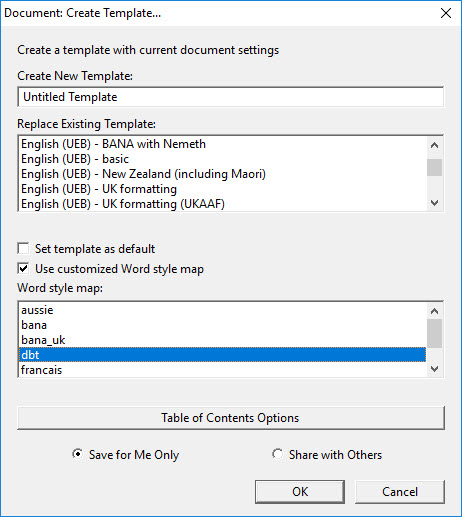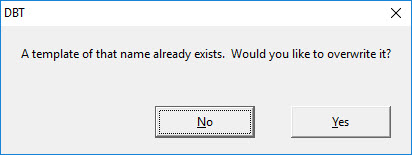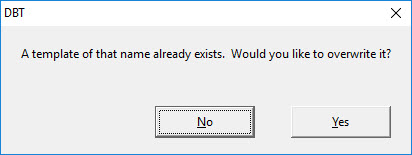
To create a new template, you need to start a new document based on an existing template. The reason behind this is quite simple. Unlike MS Word, where most documents can be based on a single "Normal" default template, braille formatting differs from country to country.
A summary of most of the supplied default templates is listed in the Default Templates topic. You begin by creating a new document using the template that most closely matches your needs.
You should now have a blank document on your screen. This blank document has already incorporated the Global Printer and Embosser settings of (a) your default ink printer, and (b) your default braille embosser. These should ideally have been defined via Global: Printer Setup and Global: Embosser Setup. However, do not worry. They can be changed.
Please note that from now on in the process, you absolutely must make any changes to your Printer or Embosser setup using Document: Printer Setup or Document: Embosser Setup.
If you are creating a template which requires a different base language, now is the time to make this selection. See the Document: Translation Tables menu to make your selection.
Note that there may be special considerations for languages depending on their context. For example, although you might wish to produce a document in Spanish or French, you must decide if you wish to present those languages as taught in an English School or as used in the actual country. There is a difference.
Now would be a good time to save your template, as you do so, consider whether or not you wish to keep it as a kind of "master template" which you can call up later, perhaps to modify again to create a new variation.
From the Document menu, select Create template. The following dialog will appear.

Take care here because you must choose between two options: (1) Create a new template, or (2) Replace an existing Template. If you wish to "Create a new Template" type an appropriate name in the text box.
If you wish to replace an existing Template, tab to the "Replace Existing Template" list box, and select the template to be replaced.
Should you wish to use a "customized Word style map", mark that check box. (Style maps are files which provide a mapping from Word Styles to DBT Styles when you import a file from Word into DBT. These files have a .mws file extension.)
Finally, click on OK, or press Enter.
The following dialog will appear asking you to confirm that you wish to replace the existing template.


Click the Yes or No button. If you press Enter, No is the default.
A custom template for your own use is normally saved in your own computer profile:
C:\Users\[your-user-name]\AppData\Roaming\Duxbury\DBT\Templates.
To save a custom template for all users of your PC, save it in:
C:\ProgramData\Duxbury\DBT\Templates.
Note: drive "C:" is the normal files location on Windows, though your system may use a different "volume" for your files.